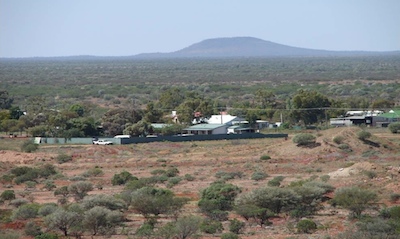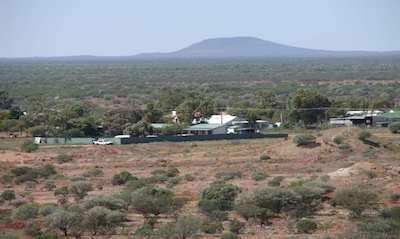At first I felt a bit weird with them telling me I had arthritis and that. I thought it was a bit of a joke. Then they showed me the x-rays and that and MRI, cat scan, whatever it was, it was a bit depressing and a bit shocking being young and finding out you’ve got arthritis. It wasn’t too good.
(26 year old Aboriginal man with moderately disabling low back pain)
A lot has been written about the pitfalls of biomedical oriented beliefs in low back pain care e.g. [1] but just how far do these issues extend?
Our research explored low back pain in Aboriginal Australians. Why Aboriginal Australians? Firstly, the differences in health status between Aboriginal and non-Aboriginal people in a country like Australia is a tremendous concern (for an eloquent description see here).
Secondly, in contradiction to my clinical observations working as a physiotherapist in an Aboriginal Community Controlled Health Care Service, early research suggested that low back pain is highly prevalent in Aboriginal populations, however not disabling because of cultural beliefs about pain [2]. If this is true there may be valuable lessons for all populations about protective beliefs. If this is not true and these conclusions are either generalised (e.g. see p43 [3]) or out-dated due to recent medicalization of the problem, the problem of low back pain may be sidelined for Aboriginal people.

We undertook a qualitative study in a regional and two remote areas in Western Australia (see photo above), interviewing and yarning with Aboriginal people about their low back pain.
Contrary to previous research we found that persistent low back pain was substantially disabling for some Aboriginal people with impacts on activities in daily life, employment, sport and family participation, and emotional and cultural well-being [4].
Rather than cultural beliefs about pain being protective of disability, even those in remote areas held negative biomedical oriented beliefs about the cause of pain (e.g. “bone crunchin’ on bone”) and the future (e.g. “he told me I’d end up in a wheelchair”) [5]. These beliefs were more common to those who were more disabled, and originated from health care practitioners such as doctors (in particular medical specialists), physiotherapists and chiropractors. Beliefs were often related to findings on spinal radiological imaging.
Our findings show how pervasive biomedical approaches to LBP are and their potential negative impact on disability. Often these beliefs were based on comments made by HCP’s many years earlier. Sadly resilience factors such as future optimism and a sense of self efficacy were observed in those who were less disabled, but were rarely provided by HCP’s.
Our ongoing work is translating these research findings into improved health care practice in an Aboriginal health care service and determining whether culturally appropriate LBP information can positively influence the beliefs of Aboriginal people with LBP using a narrative/storied approach. Like all research in Aboriginal health it must be based on respectful and trusting relationships in which the participation of Aboriginal people and incorporating Aboriginal world views are integral – our ideal is research that is culturally secure for Aboriginal people [6].
How to change the persistent biomedical beliefs provided by HCP’s to those with LBP care in health care more broadly, is an ongoing concern that likely requires systems level, possibly including population level approaches [7].
About Ivan Lin
Ivan Lin is a researcher/academic with the Combined Universities Centre for Rural Health, Australia, physiotherapist for an Aboriginal health service, and has recently submitted his PhD undertaken with the Musculoskeletal Pain Team at Curtin University, Perth, Australia, and a cross-institutional, cross-cultural, and cross-philosophical team of supervisors. He lives on Yamajti country about 400km/250 miles from a city in an Australian coastal town known for its sun, wind, surf and crayfish.
References
[1] Deyo RA, Mirza SK, Turner JA, & Martin BI (2009). Overtreating chronic back pain: time to back off? Journal of the American Board of Family Medicine , 22 (1), 62-8 PMID: 19124635
[2] Honeyman PT, & Jacobs EA (1996). Effects of culture on back pain in Australian aboriginals. Spine, 21 (7), 841-3 PMID: 8779015
[3] Waddell, G., The back pain revolution. Second ed 2004, Edinburgh: Churchill Livingstone.
[4] Lin IB, O’Sullivan PB, Coffin JA, Mak DB, Toussaint S, & Straker LM (2012). ‘I am absolutely shattered’: the impact of chronic low back pain on Australian Aboriginal people. Eur J Pain, 16 (9), 1331-41 PMID: 22392923
[5] Lin IB, O’Sullivan PB, Coffin JA, Mak DB, Toussaint S, & Straker LM (2013). Disabling chronic low back pain as an iatrogenic disorder: a qualitative study in Aboriginal Australians. BMJ open, 3 (4) PMID: 23575999
[6] Coffin, J., Rising to the challenge in Aboriginal health by creating cultural security. Aboriginal and lslander Health Worker Journal, 2007. 31(3): p. 22-24.
[7] Buchbinder, R., Jolley, D., & Wyatt, M. (2001). 2001 Volvo Award Winner in Clinical Studies: Effects of a Media Campaign on Back Pain Beliefs and Its Potential Influence on Management of Low Back Pain in General Practice Spine, 26 (23), 2535-2542 DOI: 10.1097/00007632-200112010-00005




